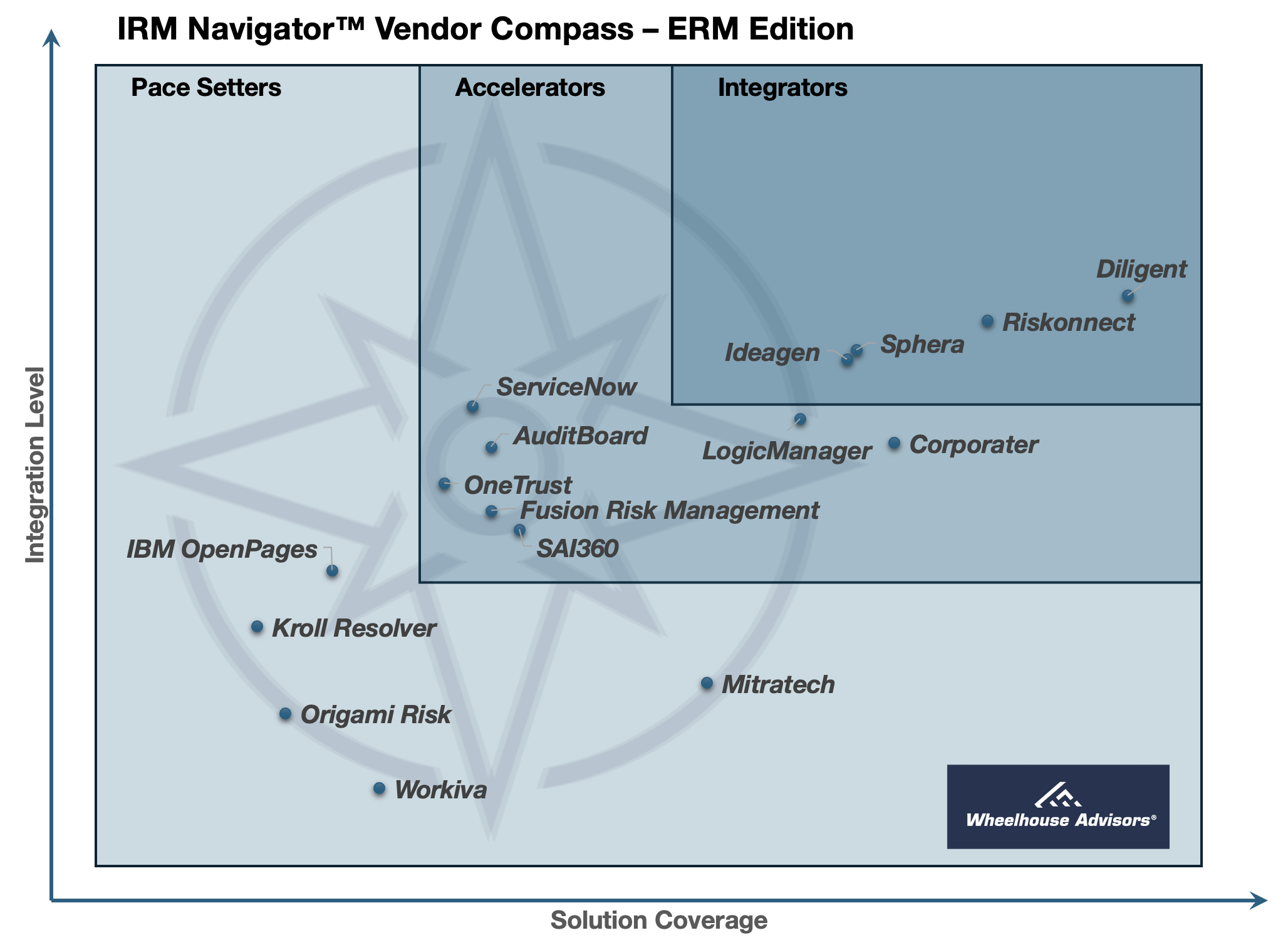 Image 1 of 1
Image 1 of 1


IRM Navigator™ Vendor Compass for ERM - 2024
Enterprise Risk Management (ERM) has experienced significant transformation over the past few decades, evolving from a primarily siloed function to a more integrated and strategic discipline. This section provides an in-depth overview of ERM's evolution, its critical role within the IRM Navigator™ framework, and the benefits of integrating ERM applications into a unified risk management platform.
Importance of ERM in the IRM Navigator™ Framework
Recognizing the need for a more integrated approach, the IRM Navigator™ framework positions ERM as a central component that aligns strategic objectives with risk management practices across the enterprise. Developed by Wheelhouse Advisors, the IRM Navigator™ framework bridges the gap between ERM and other risk disciplines, fostering a cohesive environment where risk information flows seamlessly across departments and organizational levels.
In this integrated framework, ERM is not confined to high-level risk identification but is connected with ORM, TRM, and GRC functions. This connectivity ensures that risks are assessed comprehensively, considering their interdependencies and collective impact on the organization. By integrating ERM within the broader risk management ecosystem, organizations can better anticipate and respond to emerging risks, turning potential threats into strategic opportunities.
The IRM Navigator™ Framework emphasizes four primary integration points—Processes, Assets, Policies, and Goals—each corresponding to a specific IRM market segment:
Processes (ORM): Managing business processes to enhance efficiency and mitigate operational risks.
Assets (TRM): Protecting technological assets and managing associated risks.
Policies (GRC): Ensuring compliance with laws, regulations, and governance standards.
Goals (ERM): Aligning risk management strategies with organizational objectives.
Enterprise Risk Management (ERM) has experienced significant transformation over the past few decades, evolving from a primarily siloed function to a more integrated and strategic discipline. This section provides an in-depth overview of ERM's evolution, its critical role within the IRM Navigator™ framework, and the benefits of integrating ERM applications into a unified risk management platform.
Importance of ERM in the IRM Navigator™ Framework
Recognizing the need for a more integrated approach, the IRM Navigator™ framework positions ERM as a central component that aligns strategic objectives with risk management practices across the enterprise. Developed by Wheelhouse Advisors, the IRM Navigator™ framework bridges the gap between ERM and other risk disciplines, fostering a cohesive environment where risk information flows seamlessly across departments and organizational levels.
In this integrated framework, ERM is not confined to high-level risk identification but is connected with ORM, TRM, and GRC functions. This connectivity ensures that risks are assessed comprehensively, considering their interdependencies and collective impact on the organization. By integrating ERM within the broader risk management ecosystem, organizations can better anticipate and respond to emerging risks, turning potential threats into strategic opportunities.
The IRM Navigator™ Framework emphasizes four primary integration points—Processes, Assets, Policies, and Goals—each corresponding to a specific IRM market segment:
Processes (ORM): Managing business processes to enhance efficiency and mitigate operational risks.
Assets (TRM): Protecting technological assets and managing associated risks.
Policies (GRC): Ensuring compliance with laws, regulations, and governance standards.
Goals (ERM): Aligning risk management strategies with organizational objectives.

